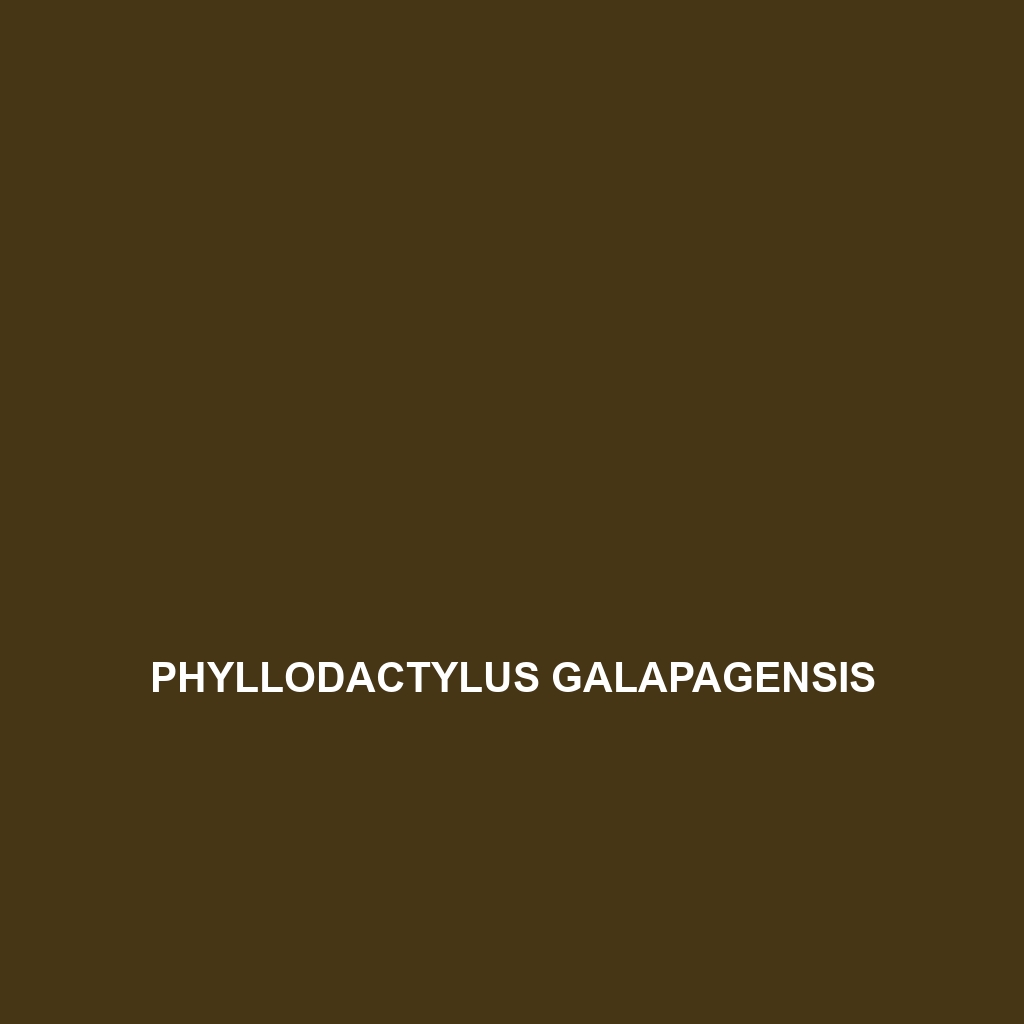Common Name
Phyllodactylus galapagensis
Scientific Name
Phyllodactylus galapagensis
Habitat
Phyllodactylus galapagensis, commonly known as the Galápagos gecko, is primarily found in the unique and diverse habitats of the Galápagos Islands. This species thrives in a variety of ecosystems, including tropical dry forests, coastal regions, and rocky areas. The Galápagos Islands are characterized by a warm, arid climate with seasonal variations, reflecting an ecosystem that supports both flora and fauna adapted to specific environmental conditions. In these ecosystems, Phyllodactylus galapagensis is often found resting on rocky surfaces or among the foliage at lower elevations, where it can benefit from the ambient warmth and avoid predators.
Physical Characteristics
Phyllodactylus galapagensis displays several distinctive physical characteristics. This small gecko typically reaches a length of about 2 to 4 inches (5 to 10 centimeters) from snout to tail. Its skin is predominantly light brown or gray, adorned with dark markings that provide excellent camouflage against the rocky surfaces of its habitat. One of the most notable features of this gecko is its enlarged toe pads, which facilitate climbing and gripping on various surfaces, a key adaptation for survival in its rocky environment. The relatively large eyes of Phyllodactylus galapagensis also enhance nocturnal vision, allowing this species to forage effectively during twilight hours.
Behavior
Behaviorally, Phyllodactylus galapagensis is primarily nocturnal, becoming active at night when temperatures are cooler. This gecko exhibits fascinating social interactions, particularly during the mating season, where males engage in elaborate courtship displays to attract females. These displays may involve head bobs, body posturing, and vocalizations that resonate through the quiet evenings of the Galápagos. Notably, these geckos exhibit territorial behavior, with males frequently defending their chosen areas against rivals. Additionally, Phyllodactylus galapagensis has been observed to bask in the warmth of the sun to regulate its body temperature during the early morning light.
Diet
As an insectivore, Phyllodactylus galapagensis primarily feeds on a diverse array of insects and invertebrates. Common food sources include ants, beetles, and various small arthropods that abound in its habitat. Its foraging behavior typically occurs at night, when it hunts by tracking movements and using its keen eyesight to capture prey. The diet of the Galápagos gecko is vital for controlling insect populations, maintaining ecological balance in its habitat.
Reproduction
The reproduction of Phyllodactylus galapagensis involves a fascinating mating cycle. Mating generally occurs during the warmer months, generally spanning from late spring to early summer. After a courtship period marked by ritualized displays, females lay 1 to 2 eggs in hidden, moist locations to protect them from predators. The eggs typically incubate for about 60 days, and once hatched, the hatchlings are independent from birth. Parental care is minimal in this species, with juveniles quickly adapting to their surroundings to evade potential threats.
Conservation Status
Currently, Phyllodactylus galapagensis is classified as of Least Concern on the IUCN Red List. However, the species is not without its challenges, as habitat loss due to invasive species and human activities poses potential threats. Conservation efforts on the Galápagos Islands are critical to preserving not only this gecko but also the delicate ecosystems in which it resides. Initiatives focusing on habitat restoration and the management of invasive species have been implemented to ensure the continued survival of Phyllodactylus galapagensis.
Interesting Facts
One of the interesting facts about Phyllodactylus galapagensis is its remarkable ability to change color to blend with its surroundings, a trait that aids in camouflage from both predators and potential prey. Furthermore, this gecko can also regenerate its tail if lost, a fascinating adaptation that allows it to escape from predators. Additionally, the unique microhabitat of the Galápagos has led to the evolution of several endemic subspecies of this gecko, showcasing its ecological diversity.
Role in Ecosystem
Phyllodactylus galapagensis plays a crucial role in its ecosystem as both a predator and prey. By consuming insects and various small invertebrates, it aids in regulating their populations, thus contributing to ecological stability. Conversely, this gecko serves as a food source for larger predators, including birds and reptiles, making it an integral part of the food web. Additionally, its presence helps promote biodiversity within the Galápagos Islands, ensuring the health and resilience of its unique ecosystems.
